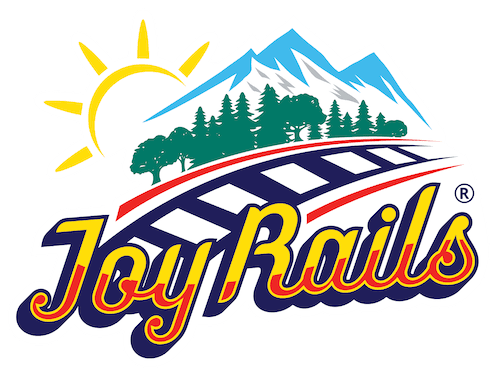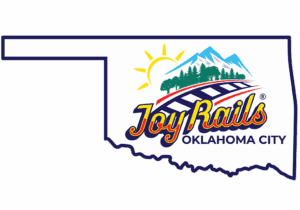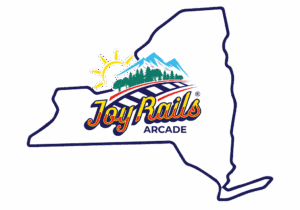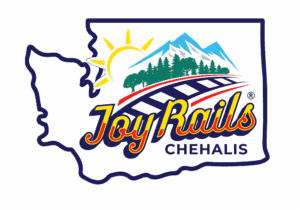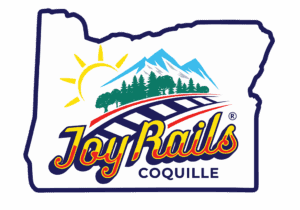Train Tracks to Scenic Rail Tour: How Old Rails Get a New Life
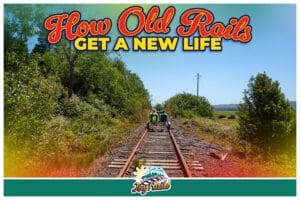 Once a train track, always a train track – right? Not necessarily! Across the country, old train tracks that once carried freight and passengers are being transformed into scenic rail tours. These adventures, like Joy Rails in Coquille, Oregon, and Chehalis, Washington, allow people to explore historic railways in a fun, eco-friendly way. But how does a set of train tracks go from carrying locomotives to supporting an electric rail tour? Let’s take a look at how this transformation happens.
Once a train track, always a train track – right? Not necessarily! Across the country, old train tracks that once carried freight and passengers are being transformed into scenic rail tours. These adventures, like Joy Rails in Coquille, Oregon, and Chehalis, Washington, allow people to explore historic railways in a fun, eco-friendly way. But how does a set of train tracks go from carrying locomotives to supporting an electric rail tour? Let’s take a look at how this transformation happens.
A Four-Step Transformation
Step 1: Rail Line Abandonment and Decommissioning
Railroads operate on a vast network of tracks, but as industries shift, new transportation methods emerge, and railway companies consolidate, some tracks become obsolete. When a rail company determines a route is no longer financially viable, it may file for abandonment with the Surface Transportation Board (STB) in the U.S. or a similar agency in other countries. Rail lines are typically abandoned due to:
- Declining freight or passenger use: Some routes don’t have enough demand to justify continued operation.
- Newer, more efficient tracks: Some railroads build alternative routes that are faster or accommodate larger trains, making older tracks unnecessary.
- Economic factors: Railroad companies may go out of business, merge, or shift their focus to more profitable areas.
Once a track is officially abandoned, it may remain in place or be removed for scrap metal. In some cases, however, the abandoned tracks are left intact, making them prime candidates for rail tourism.
Step 2: Evaluating Tracks for Scenic Rail Tours
Not all abandoned tracks can be easily converted into scenic rail tours. Several factors determine whether a section of track can be repurposed:
- Track Condition: The rails and ties must be in reasonably good shape to support electronically-powered trolley cars. While they don’t require the same level of maintenance as active rail lines, they still need to be stable and safe.
- Ownership and Land Use Rights: Some tracks are owned by private rail companies, while others revert to government or land trusts. Agreements must be made to allow public use.
- Surrounding Environment: Rail tours work best in areas with scenic views, historical significance, or unique landscapes. Tracks running through forests, mountains, or rivers make ideal routes.
Local businesses, tourism boards, and preservation groups often work together to assess a track’s potential. If a rail line checks all the boxes, the next step is preparing it for safe, recreational use.
Step 3: Track Conversion and Safety Measures
Transforming an old train track into a scenic rail tour requires careful planning and safety upgrades. Unlike traditional bike paths, rail tour routes must follow existing railway infrastructure, which requires special modifications to accommodate riders.
- Cleaning and Maintenance: Before a scenic rail route can open, workers clear vegetation, inspect the rails, and make minor repairs to ensure stability.
- Installing Safety Features: Because safety is a top priority, signage, crossings, and sometimes even braking zones are added to ensure safe travel.
- Tour Development: Scenic rail tour operators like Joy Rails set up guided experiences, providing guests with historical narration along the way.
Step 4: Scenic Rail Tourism Takes Off
Once the track is ready, scenic rail tours begin! Tourists and outdoor enthusiasts can book rides with Joy Rails to explore breathtaking scenery in a way that wasn’t possible before. Unlike traditional biking or hiking trails, scenic rail tours provide a unique, hands-free experience, allowing riders to coast along the tracks without needing to steer. Joy Rails’ popular scenic rail tour routes offer:
- Scenic Landscapes: The converted rail lines pass through forests and mountains, offering stunning views.
- Wildlife Spotting: Because the trolley cars are quiet, they allow for peaceful encounters with local wildlife.
- Historic Features: Riders will travel over wood trestles, see historic structures, and other glimpses of the past.
Why Scenic Rail Tours Are the Perfect Second Life for Old Tracks
Repurposing old train tracks for scenic rail tours offers multiple benefits:
- Preserves History: Instead of letting old railways decay, rail tours keep them active and appreciated.
- Boosts Tourism and Local Economies: Many routes attract visitors to rural areas, helping support small businesses and communities.
- Accessible for All Ages: E-Assist trolley cars are easy to use, making them a great activity for families, seniors, and people of all fitness levels.
Take A Scenic Rail Tour with Joy Rails
The transformation from train track to scenic rail tour is a fascinating example of how old infrastructure can be given a second life. Whether you’re a history buff, a nature lover, or simply looking for a unique outdoor experience, a rail tour offers a one-of-a-kind way to travel through time and scenery. Joy Rails’ tours cater to everyone, making it the perfect family outing. With our e-Assist option, you can simply sit back and enjoy the scenery. If you’d prefer a more active ride, you can pedal through the beautiful scenery and peaceful environment. Either way, you’ll experience a unique connection with the landscape of the Pacific Northwest. Ready to explore? Joy Rails will be back on the tracks for another season of unforgettable scenic rail tours in Coquille, Oregon, and Chehalis, Washington, this Spring and Summer. Be sure to check our website and follow us on Facebook and Instagram for the latest updates.
